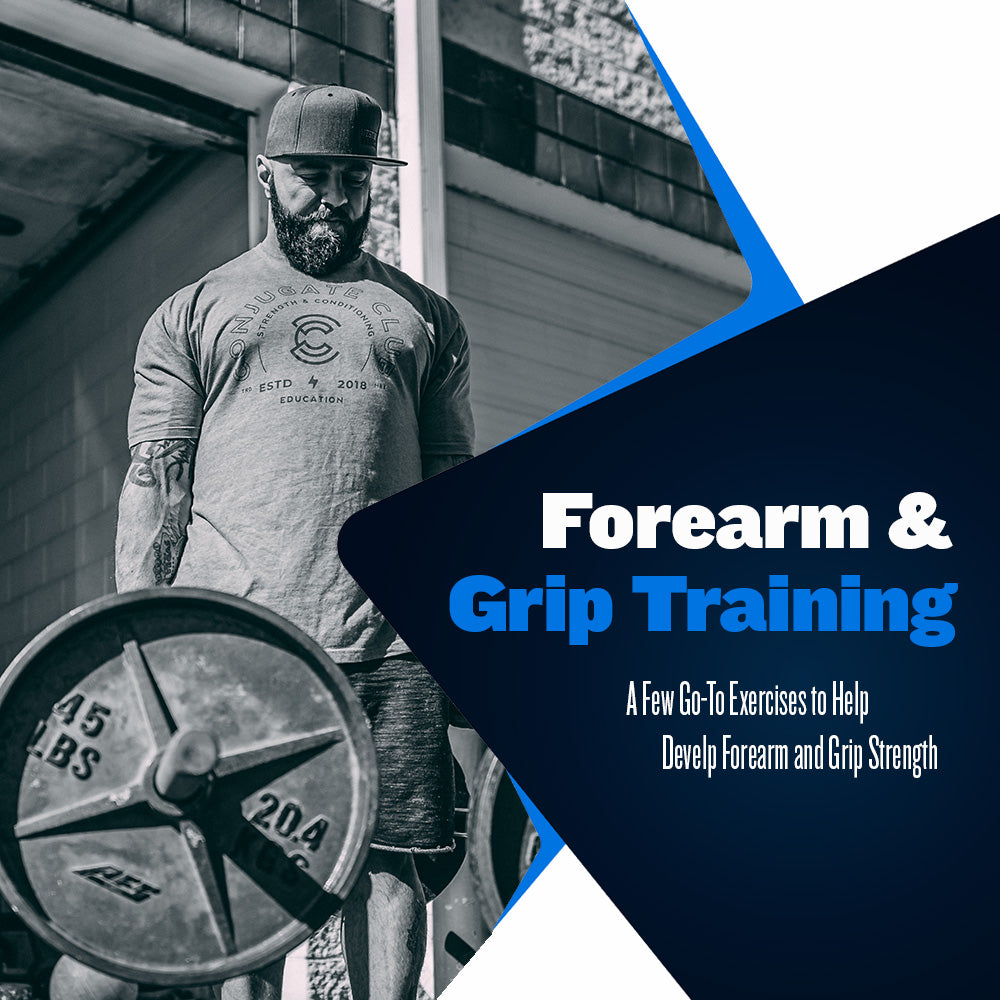Forearm and Grip Training

In almost any sport, your hands are the first point of contact for the device used to play the sport. Whether you’re a weightlifter gripping a barbell, a golfer gripping a club, a basketball player securing a rebound, or a wide receiver catching a pass, having strong hands and forearms can be a great benefit.
Focusing on developing the strength in the hands and forearms improves the amount of strength, speed, or control an athlete can exert on whatever comes into contact with their hands. For instance, a lineman with strong hands and forearms can make a more forceful initial contact and sustain control over their opponent for an extended time.
In addition to the performance benefits, the likelihood of injury to the hands, wrists, or forearms will be decreased as strength improves. Added strength and muscle mass always lead to increased levels of durability, even in the hands. This benefits athletes who use their hands to accomplish violent tasks, such as fighters or football players.
At Westside, we train our grip and forearm strength in various ways. Here are a few of our go-to exercises:
Close Grip / Reverse Grip Pull-Ups
Pull-up exercise variations can be great options to improve grip and forearm strength while simultaneously training the mid and upper back. Close grip pull-ups are a great way to target the forearms, considering the length of pull is extended, forcing the arms to perform more work to allow the lats to activate correctly.
Reverse Grip pull-ups will target the forearms and biceps, both muscles that contribute to a strong grip. This exercise will increase the focus on the arms more than any other pull-up style. If you have weak arms, consider adding reverse grip pull-ups a few times a month.
When programming these exercises, we recommend going about it one of two ways. Either perform 3-5 sets of 10-12 reps or three sets of AMRAP.
Plate / KB Pinches
One of the most beneficial old-school ways of strengthening the hands and fingers, plate pinches will help you develop hands of stone with a grip that can break bones. To focus on overall grip strength, we recommend using 25s, 45s, 100s, or kettlebells you can grip in your palm to hold for time.
Which plate or KB you can use will ultimately be dictated based on your hand size and overall grip strength. For instance, if you have a strong grip and large enough hands, you can pinch two 25lb plates together for only 50lbs total, but a tremendous challenge for the hand to manage. The same goes with the KBs; once the lighter plates become easy to pinch, you can use kettlebells or dumbbells to hold, which places the hand at a more significant disadvantage.
Athletes will typically perform these exercises for 3-4 sets performed for a maximum time each set. We keep track of this data and look to beat our former times the next time these exercises are featured in our accessory exercise training.
Barbell Shrugs / Holds
Like the pull-up variations mentioned above, barbell shrugs are an excellent way to couple upper back training with grip training. If we wanted to focus solely on the upper back benefits associated with shrugs, we would use straps and load as much weight onto the bar as we can properly manage.
However, this exercise should be performed using no grip assistance, with the motion of a barbell shrug forcing the hands to exert high levels of grip strength to maintain control over the movement of the barbell.
In addition to shrugs, we will also perform heavy barbell holds using barbells of various diameters. For instance, a lifter with a weak grip will begin holding a typical power barbell, while a stronger lifter would use a squat bar, axle bar, or barbell with poor knurling. The strategy is simple: give yourself some advantage if you have a weak grip. If you have a firm grip, put yourself at a disadvantage.
Athletes typically perform barbell shrugs for 4-6 sets until grip fails. Holds will be performed for 3-5 sets for a maximum time each set.
To learn more about the Conjugate Method, visit the Westside Barbell blog. For more information regarding sport-specific Conjugate Method programming, visit the Conjugate Club.
Sources:
Simmons, L. (2007). Westside Barbell Book of Methods. Westside Barbell.
Verkhoshansky, Y., & Siff, M. C. (2009). Supertraining. Verkhoshansky.




